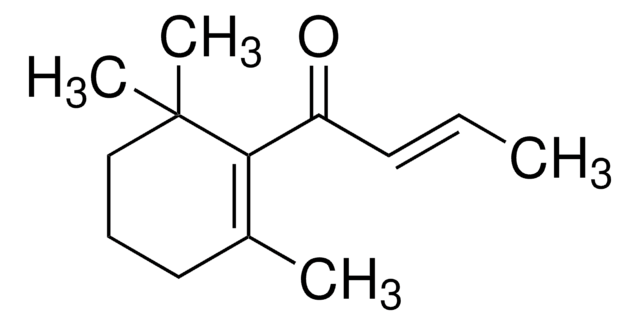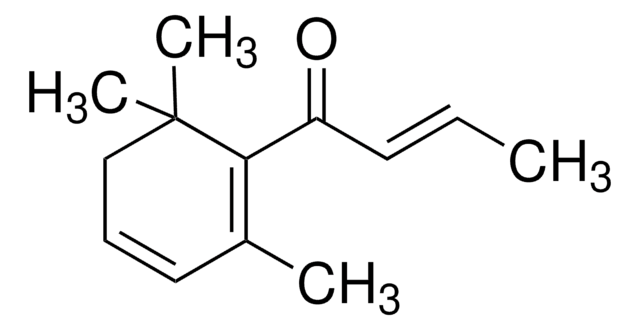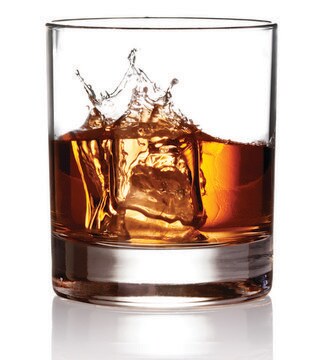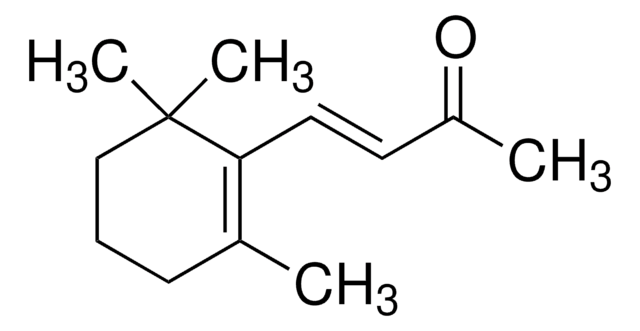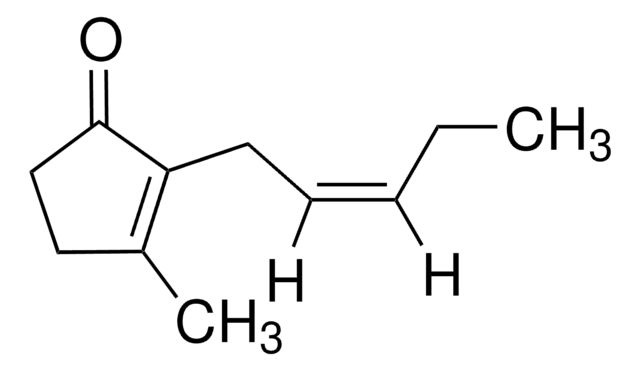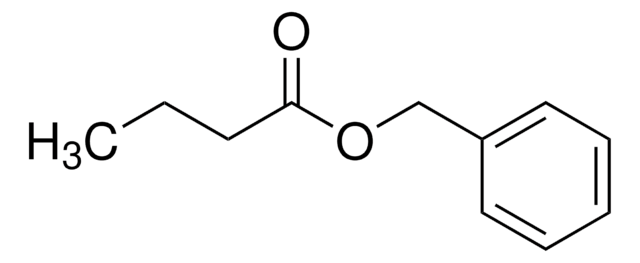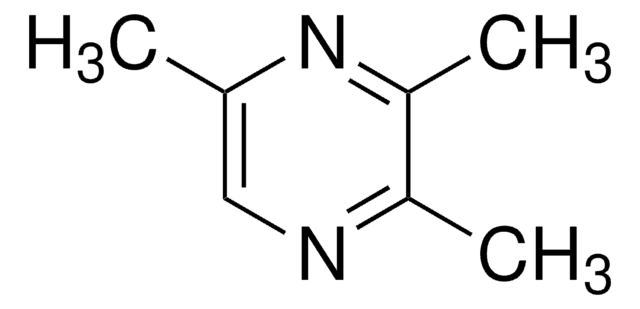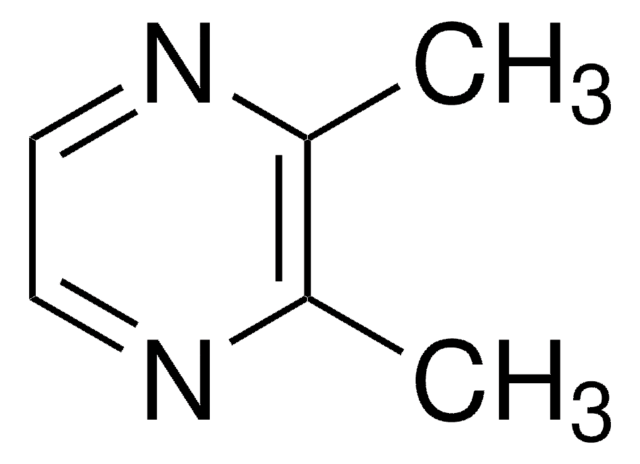Kluczowe dokumenty
W342017
Damascenone
natural, 1.1-1.4 wt. % (190 proof ethanol), FG
Synonim(y):
β-Damascenone, 1-(2,6,6-Trimethylcyclohexa-1,3-dien-1-yl)-2-buten-1-one
About This Item
Polecane produkty
klasa czystości
FG
Fragrance grade
Kosher
natural
agency
follows IFRA guidelines
zgodność regionalna
EU Regulation 1223/2009
EU Regulation 1334/2008 & 872/2012
FDA 21 CFR 110
Formularz
liquid
stężenie
1.1-1.4 wt. % (190 proof ethanol)
kolor
yellow
współczynnik refrakcji
n20/D 1.350-1.380 (lit.)
gęstość
0.800-0.830 g/mL at 25 °C (lit.)
Zastosowanie
flavors and fragrances
Dokumentacja
see Safety & Documentation for available documents
alergen pokarmowy
no known allergens
alergen zapachowy
no known allergens
Organoleptyczne
apple; smoky; herbaceous; nutty; citrus; woody; rose; wine-like
temp. przechowywania
2-8°C
ciąg SMILES
C\C=C\C(=O)C1=C(C)C=CCC1(C)C
InChI
1S/C13H18O/c1-5-7-11(14)12-10(2)8-6-9-13(12,3)4/h5-8H,9H2,1-4H3/b7-5+
Klucz InChI
POIARNZEYGURDG-FNORWQNLSA-N
Szukasz podobnych produktów? Odwiedź Przewodnik dotyczący porównywania produktów
Powiązane kategorie
Opis ogólny
Zastosowanie
Działania biochem./fizjol.
Inne uwagi
Hasło ostrzegawcze
Danger
Zwroty wskazujące rodzaj zagrożenia
Zwroty wskazujące środki ostrożności
Klasyfikacja zagrożeń
Eye Irrit. 2 - Flam. Liq. 2 - Skin Sens. 1
Kod klasy składowania
3 - Flammable liquids
Klasa zagrożenia wodnego (WGK)
WGK 2
Temperatura zapłonu (°F)
60.8 °F - closed cup
Temperatura zapłonu (°C)
16 °C - closed cup
Środki ochrony indywidualnej
Eyeshields, Faceshields, Gloves, type ABEK (EN14387) respirator filter
Wybierz jedną z najnowszych wersji:
Masz już ten produkt?
Dokumenty związane z niedawno zakupionymi produktami zostały zamieszczone w Bibliotece dokumentów.
Klienci oglądali również te produkty
Global Trade Item Number
| SKU | GTIN |
|---|---|
| W342017-100G | |
| W342017-1KG | |
| W342017-25G-K | 4061838080042 |
| W342017-100G-K | 4061838193476 |
| W342017-1KG-K | 4061837536151 |
| W342017-25G | |
| W342017-SAMPLE | |
| W342017-SAMPLE-K | 4061837536168 |
Nasz zespół naukowców ma doświadczenie we wszystkich obszarach badań, w tym w naukach przyrodniczych, materiałoznawstwie, syntezie chemicznej, chromatografii, analityce i wielu innych dziedzinach.
Skontaktuj się z zespołem ds. pomocy technicznej